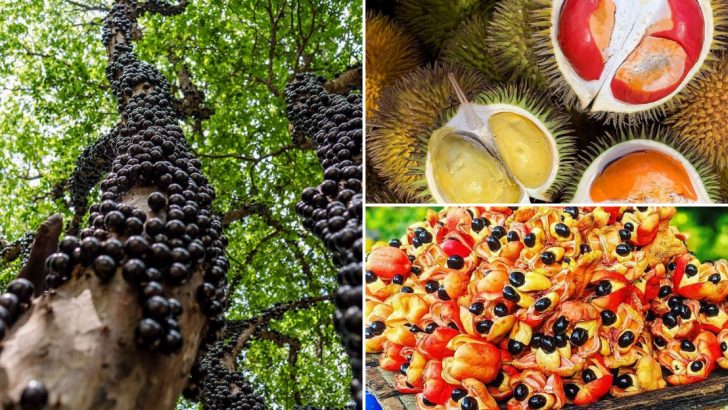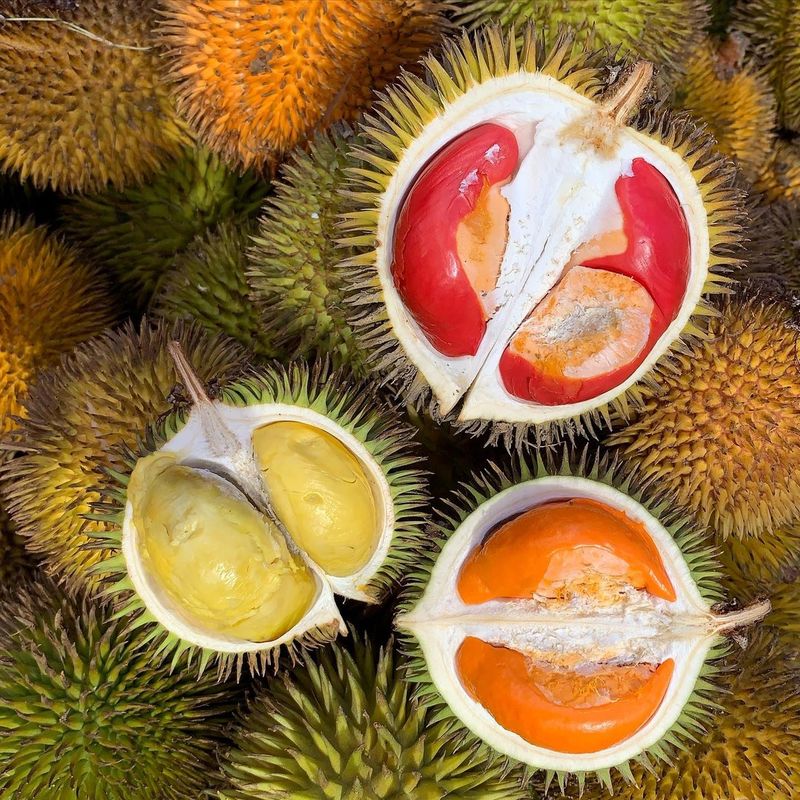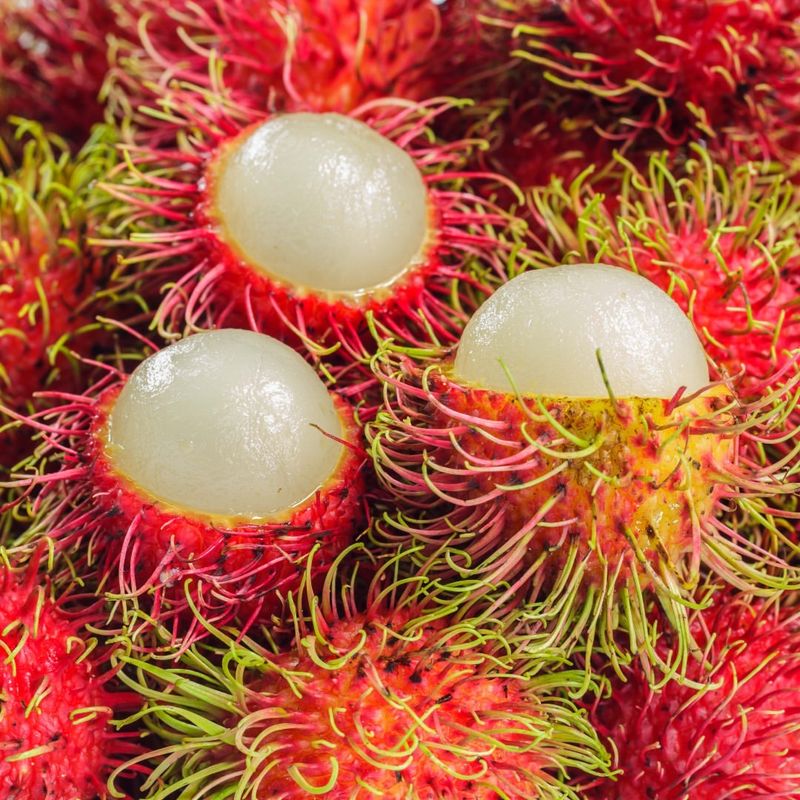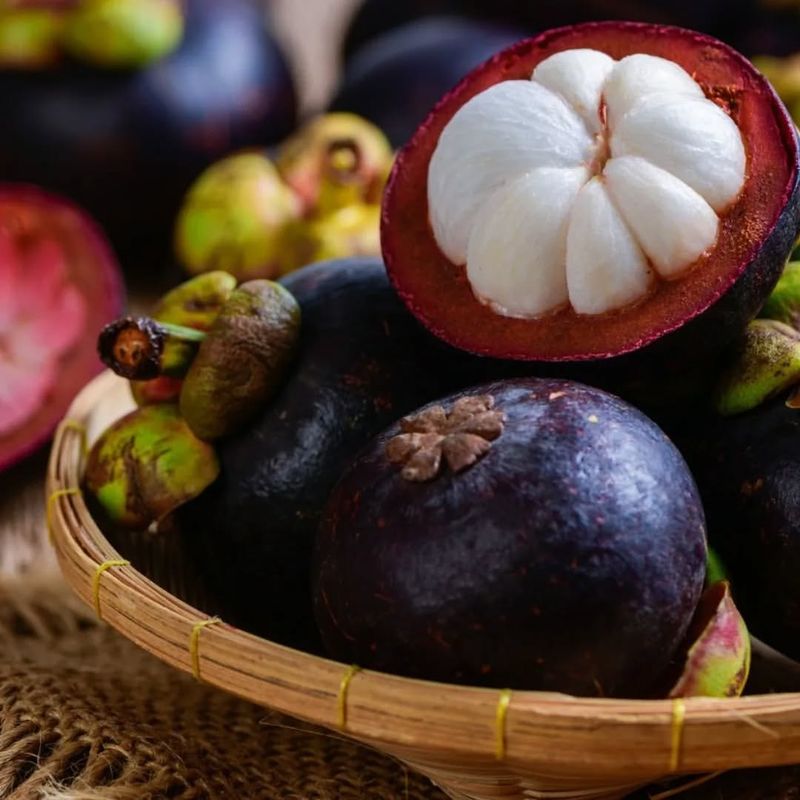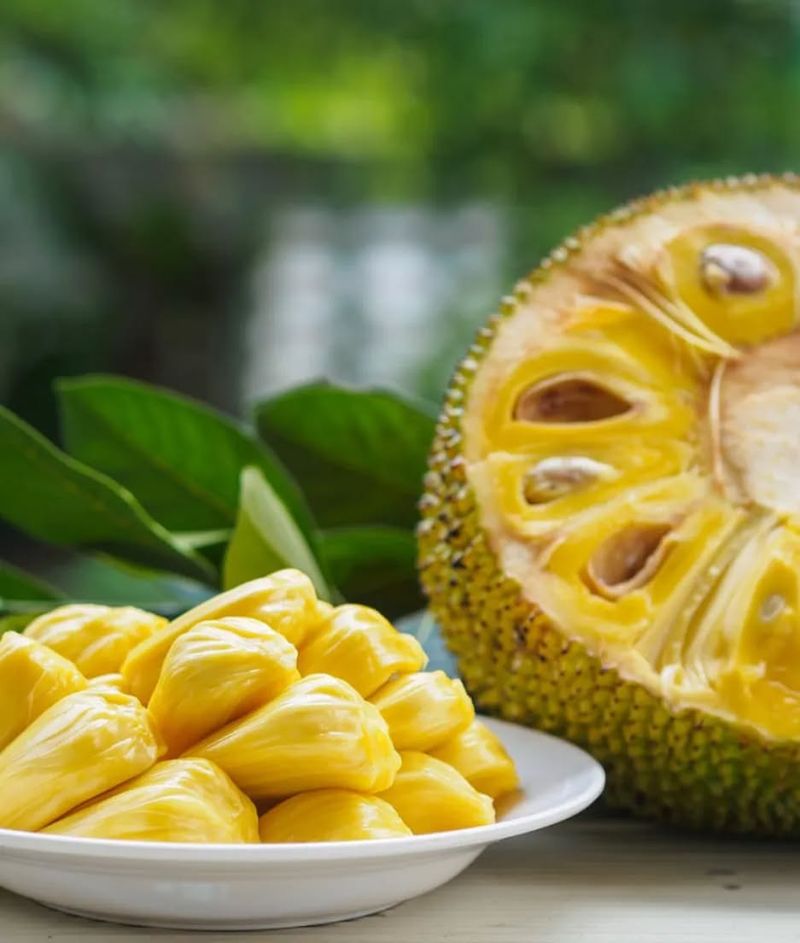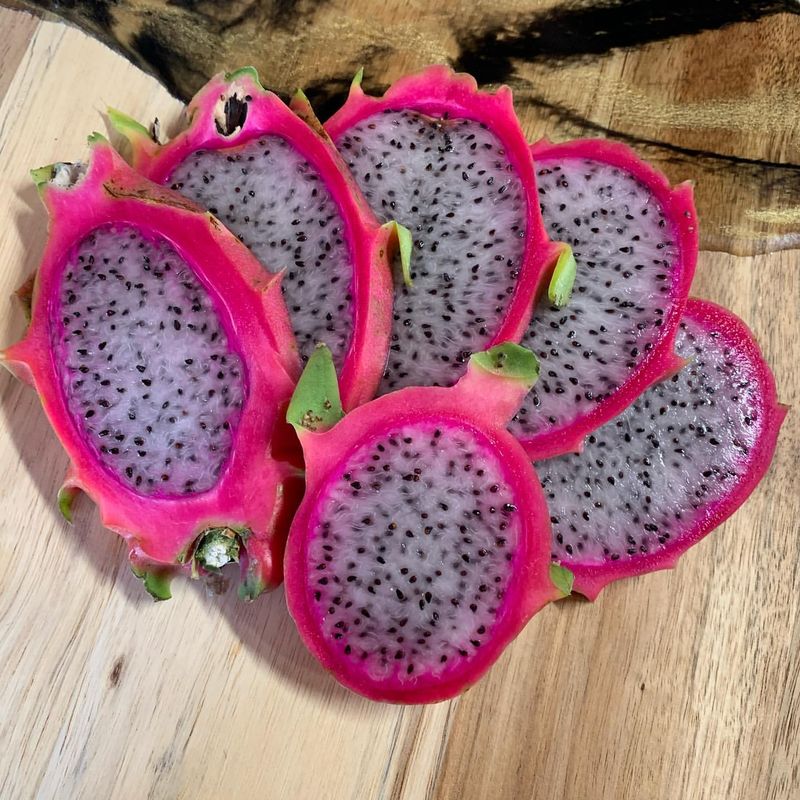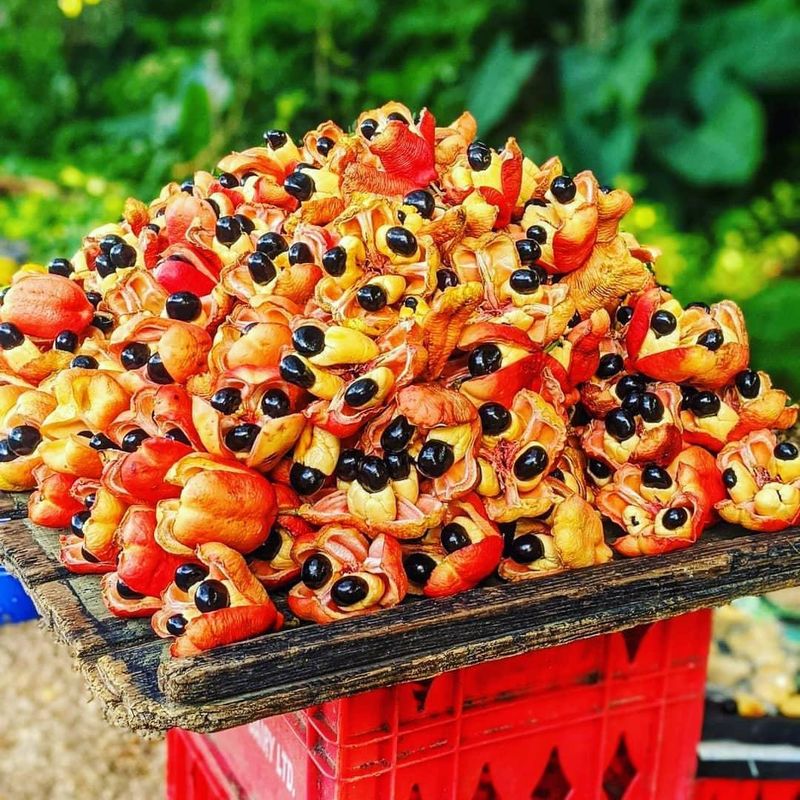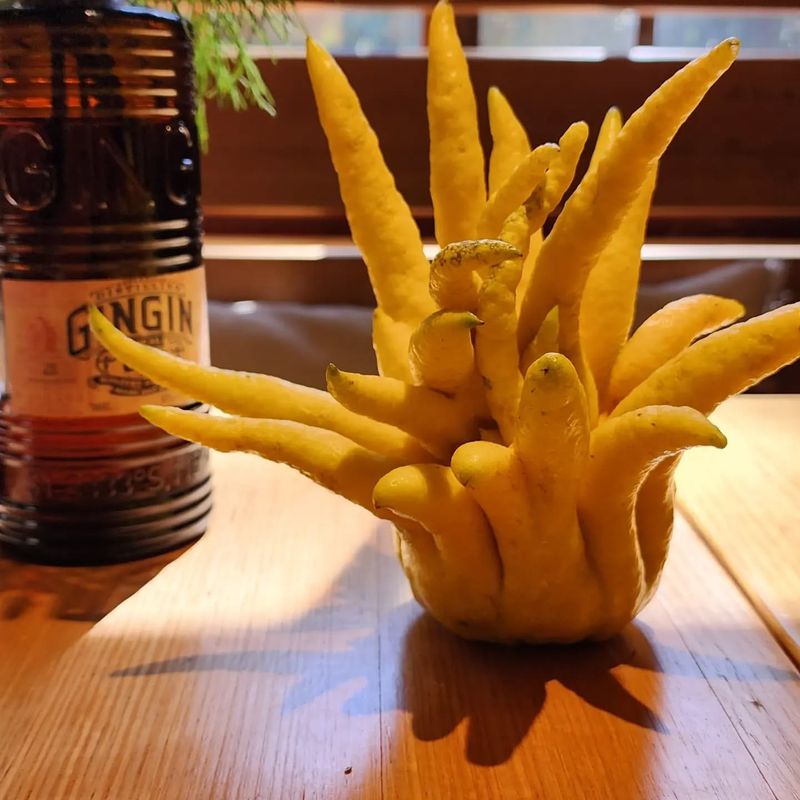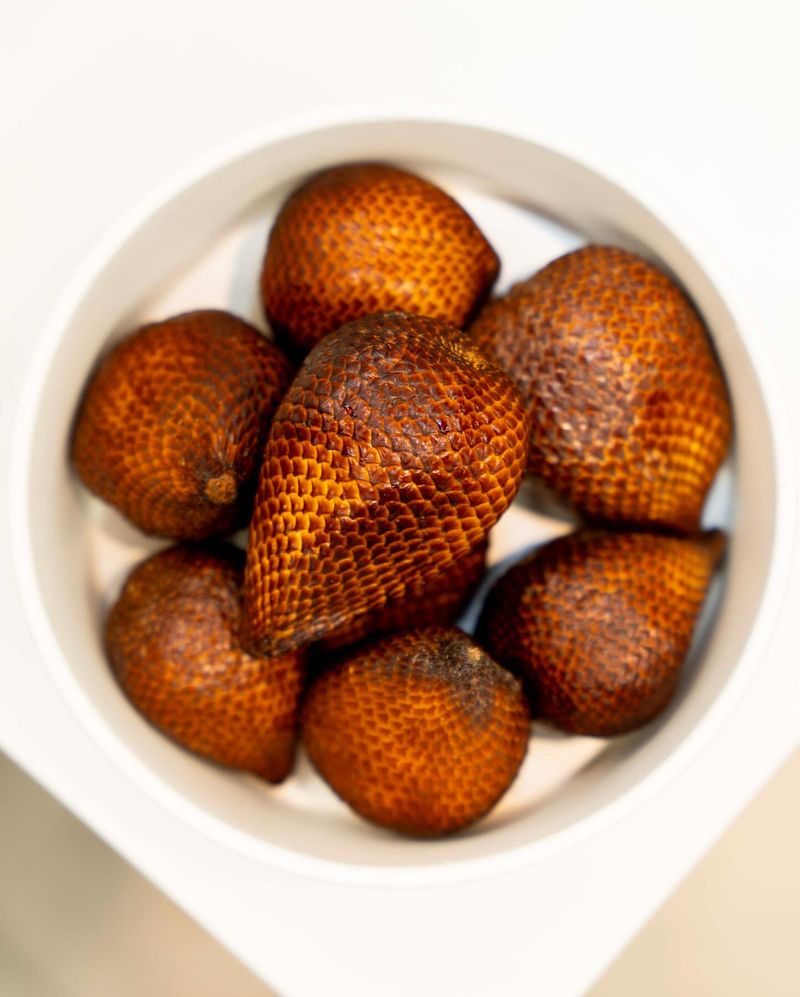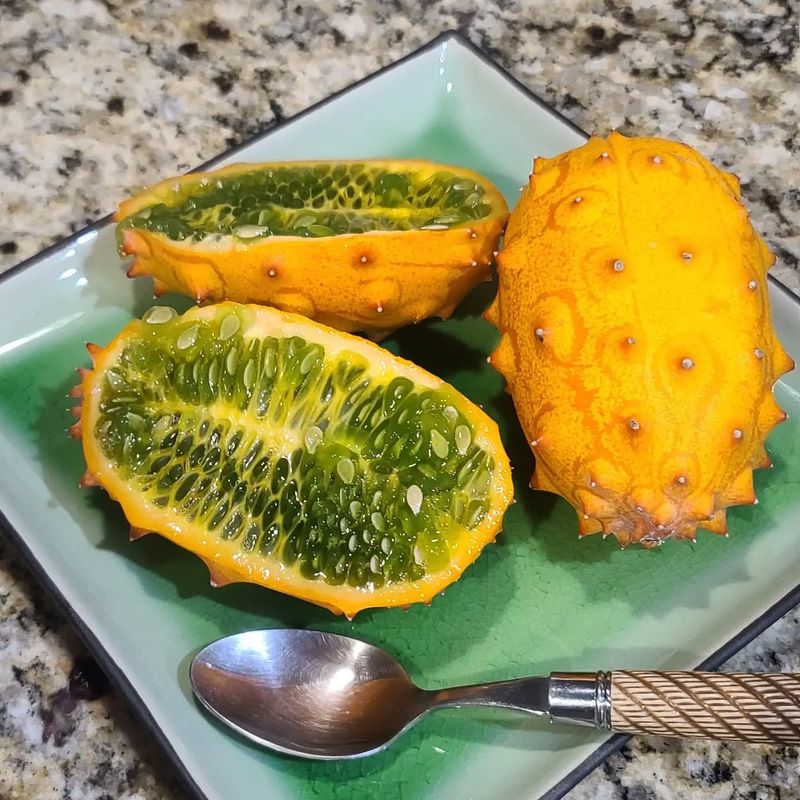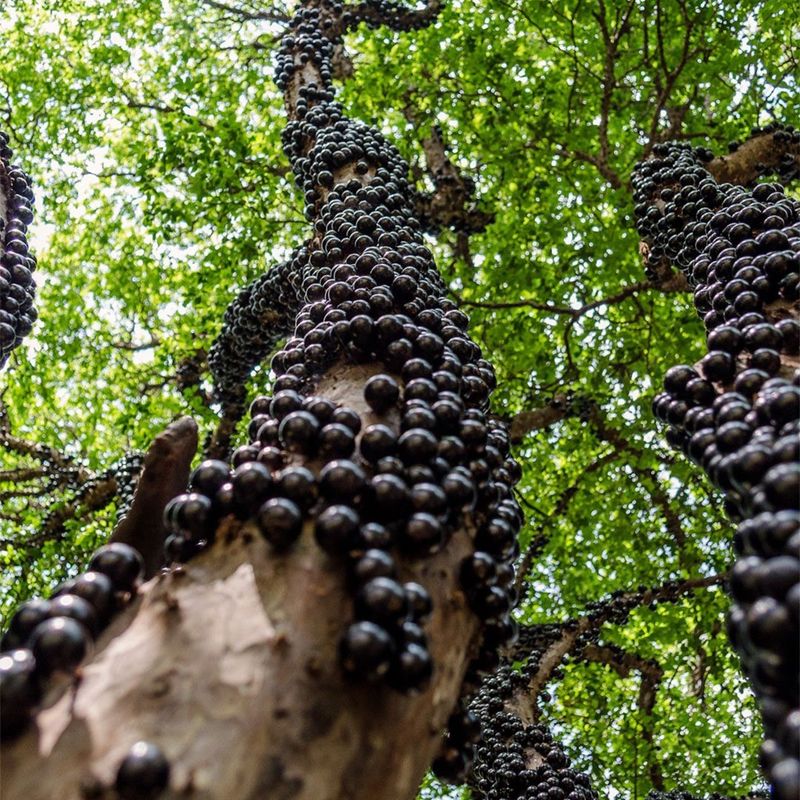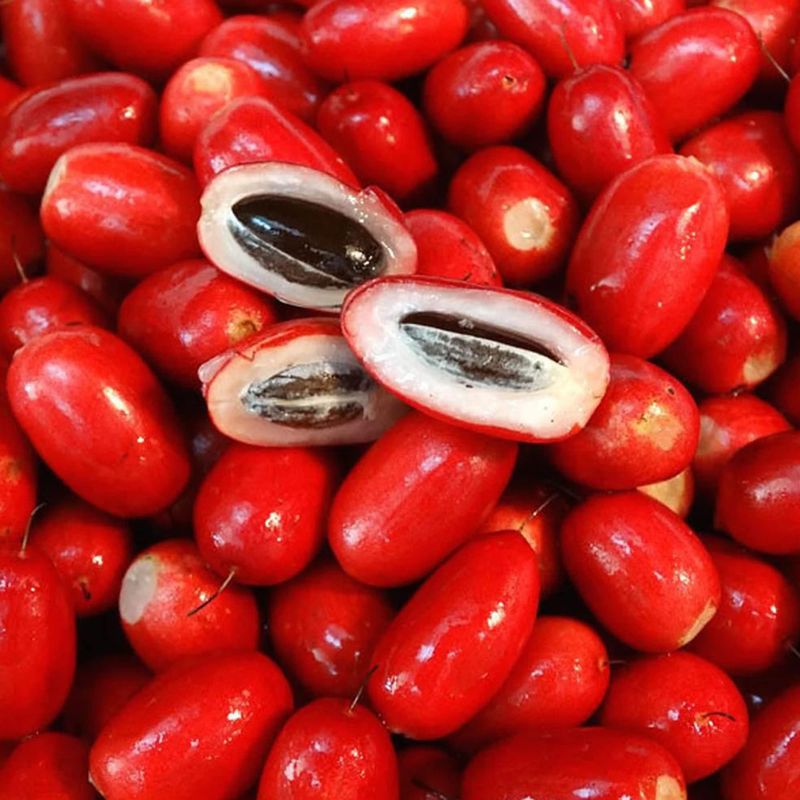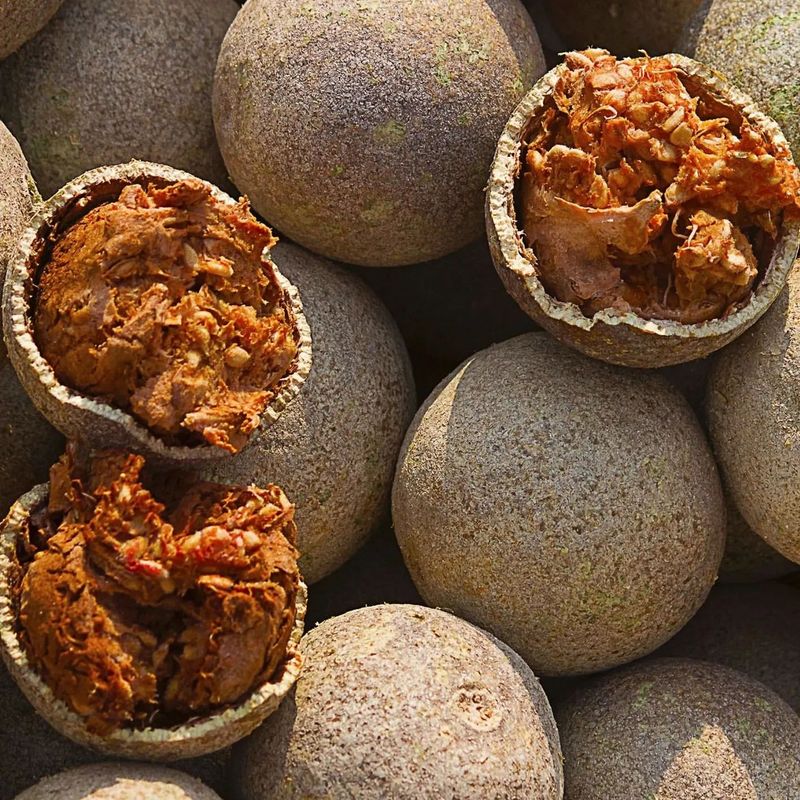I’ve always loved discovering new flavors, but trying the unusual fruits from around the globe was something else entirely. I’ve bitten into fruits that were spiky, slimy, and downright strange—and loved every second of it. Each fruit was more than just a flavor; it was a connection to a culture, a moment of discovery.
For those willing to step out of their comfort zone, these 12 weird fruits from around the world are an absolute must-try. Let me take you on this flavorful journey, where each fruit tells its own story, but also presents its own challenge.
1. Durian
If you ever wander through a market in Southeast Asia, you might encounter the infamous durian. Known for its pungent aroma, this spiky fruit is both revered and reviled. Getting past its smell, the creamy texture rewards you with flavors often described as a mix of almonds and custard.
Durian is celebrated as the ‘king of fruits’ in regions it grows in. Often banned in hotels and transportation due to its overpowering odor, many locals savor it fresh or incorporated into sweets.
How you approach eating durian is up to you, but be prepared for an experience that challenges your senses. I found it oddly satisfying despite its controversial reputation.
2. Rambutan
When you first see it, you might think it’s a sea creature rather than a tropical fruit. Hidden beneath a rambutan’s hairy shell is a sweet, juicy fruit that looks like a lychee. When you crack it open, a translucent orb awaits, offering a burst of refreshing sweetness.
In the tropical regions of Southeast Asia, markets overflow with this bizarre yet enticing fruit. Best enjoyed fresh, its unique texture adds to its allure. Feeling adventurous with your palate? Be sure to give rambutan a try.
But mind the seed in the center, as it’s not edible. I remember my first taste; it was as if nature had wrapped a candy in vibrant disguise. The experience was both fun and flavorful.
3. Mangosteen
There’s no fruit more deserving of the title ‘queen’ than the mangosteen. With its thick purple shell, it guards a treasure of juicy white segments inside. Revered for its sweet and tangy taste, mangosteen is a tropical favorite.
How it’s consumed often involves a careful squeeze to split open the rind. Once you do, the fragrant and luscious segments are a delight. This fruit has a regal reputation for good reason.
It’s less known in the West, but seeking it out is worthwhile. The mix of sweetness and acidity is utterly enchanting. It’s like tasting the essence of a tropical paradise, compacted into a small, round fruit.
4. Jackfruit
I think that size matters when it comes to fruits and jackfruit stands impressively large. This behemoth fruit, native to parts of Asia, can reach up to 100 pounds. Its tough, green exterior hides a sweet treasure of yellow pods inside.
How jackfruit is used varies widely; it’s a versatile fruit. When ripe, it’s a sugary treat, akin to bananas or pineapples, yet unripe, it serves as a meat substitute in savory dishes.
Trying jackfruit might intrigue you, but be prepared for its sticky sap to be messy. I tackled this giant with curiosity and caution and its distinct flavor and texture were a pleasant experience for my tastebuds. It offers a culinary adventure worth exploring, whether in sweet or savory forms.
5. Dragon Fruit
With its striking appearance, dragon fruit is surprisingly mild. Its bright pink skin and green scales give it a mythical look. When sliced open, its white flesh, dotted with black seeds, is a visual treat.
Expecting bold flavors? You might be surprised. The taste of dragon fruit is subtle, with hints of kiwi and pear. Hence, it’s often used in smoothies or as a refreshing snack.
I remember trying dragon fruit on a hot day by the beach in Taiwan. Its hydration and light sweetness were perfect for the tropical climate. Trying it feels like tasting a work of art, given its exquisite presentation and gentle flavor.
6. Ackee
Ackee holds a special place in Jamaican cuisine. Though it’s known for its savory use in the dish ackee and saltfish, its journey from tree to plate is fascinating. Its red pods open naturally, revealing yellow arils and black seeds.
Keep in mind that only the arils are edible. When properly prepared, ackee offers a creamy texture and subtle taste, reminiscent of scrambled eggs. It’s a unique culinary experience.
In my travels, tasting ackee felt like embracing a rich part of Jamaican heritage. The fruit is not just food; it’s a symbol of the island’s culture. I appreciated its complexity and the care involved in its preparation.
7. Buddha’s Hand
How does one describe the peculiar form of Buddha’s Hand? This citrus fruit resembles an outstretched hand with yellow, finger-like segments. Unlike other fruits, it contains no pulp or juice, yet its fragrant zest is prized.
Buddha’s Hand is used mainly for its aroma. It’s often found in perfumes, liqueurs, and culinary dishes, in which its zest imparts a bright, lemony fragrance.
I was intrigued by its appearance and found its scent pleasantly calming. Not meant for eating fresh, adding it to recipes gives a distinctive touch. It’s as if nature sculpted a work of art to be appreciated with the senses.
8. Salak
Appearance can deceive, and salak might win the prize. Known as snake fruit, its scaly brown skin can be intimidating. Yet, beneath the surface lies a crisp and tangy treat.
Salak is often enjoyed as a snack or in salads. Its flesh is firm, with a taste that blends apples and pineapple. It’s a refreshing surprise once you peel away the outer layer.
I’ll never forget my first encounter with salak. The contrast between its harsh exterior and beautiful interior was a memorable discovery. Trying it felt like unwrapping a mystery, and it left a lasting impression on my palate.
9. Horned Melon
Visual allure meets taste in the captivating horned melon. Its spiky orange skin and neon green interior make it stand out. Sometimes called kiwano, this fruit’s appearance is as striking as its flavor.
The taste is a mix of cucumber, banana, and lime. It’s often consumed fresh or in salads, providing a refreshing crunch. It may look exotic, but the flavor is quite approachable.
For me, tasting the horned melon turned out to be a delightful experiment. Its juicy, jelly-like texture was unlike anything else I’d tried. Exploring this fruit offered a glimpse into the unexpected wonders of nature’s creativity.
10. Jabuticaba
Jabuticaba captures attention with its unusual growth patterns. This Brazilian fruit grows directly on the tree trunk, creating a surreal visual spectacle. Its dark purple berries are both stunning and delicious.
How does it taste? Jabuticaba offers a sweet burst of grape-like flavor, often eaten fresh or made into jellies and wines. The experience is as unique as its appearance.
I was enchanted by this tree-clinging fruit during my travels. The novelty of picking berries from the trunk itself was a joyous event. For seekers of something extraordinary in the fruit world, jabuticaba is a must-try adventure.
11. Miracle Berry
The miracle berry is a curious little fruit that has the power to transform sour flavors into sweet sensations. Imagine biting into a lemon and tasting pure sugar!
Native to West Africa, this unassuming red berry is not just a fun party trick but also has been used by locals for centuries. The magic lies in a protein called miraculin which temporarily alters taste perception.
Perfect for adventurous eaters, simply pop one in your mouth before tasting a sour meal and experience a newfound sweetness. This effect wears off within an hour.
12. Wood Apple
Wood apple, or Limonia acidissima, might not win any beauty contests with its hard, rough exterior resembling a rock. However, this fruit harbors a fragrant surprise inside.
Popular in Southeast Asia, particularly India and Sri Lanka, its pulp is often scooped out to make refreshing drinks or tangy chutneys. The aroma is a mix of tamarind and raisins, packing a punch of flavor.
Despite its tough appearance, wood apple offers numerous health benefits, including aiding digestion and providing a good dose of vitamin C. A perfect addition for those seeking something different.

